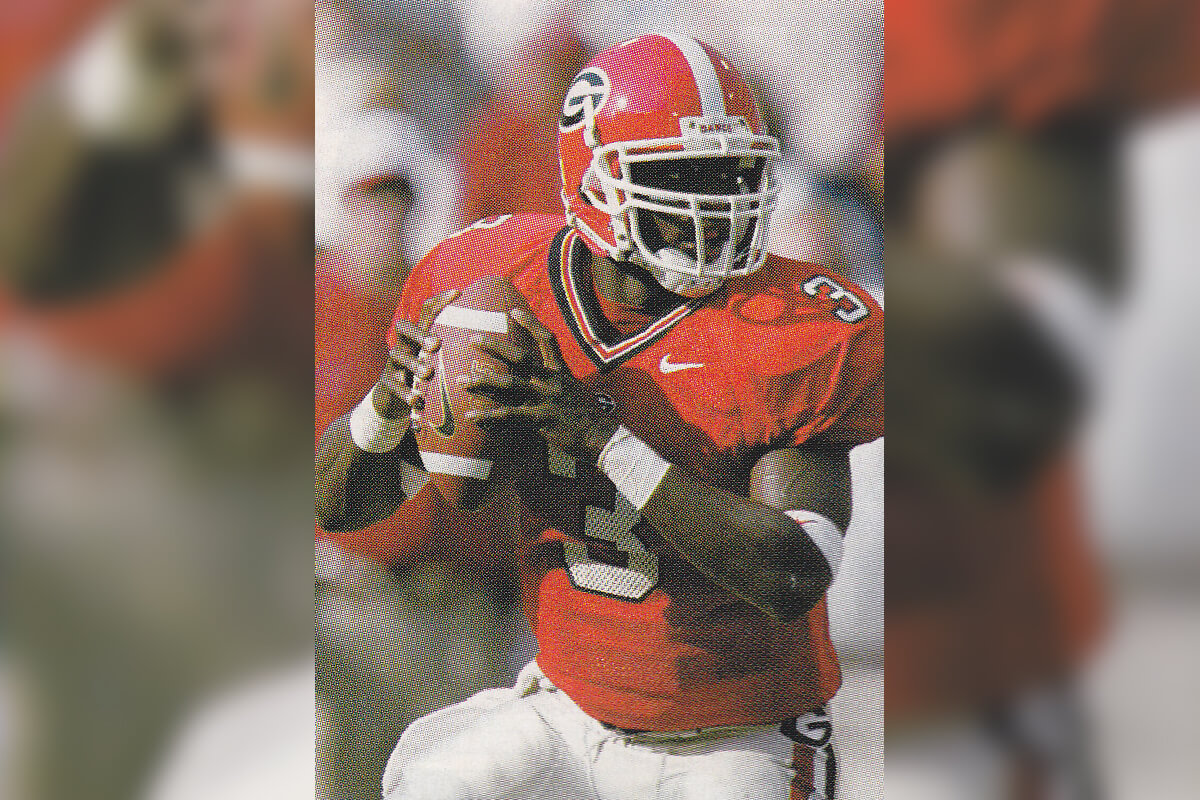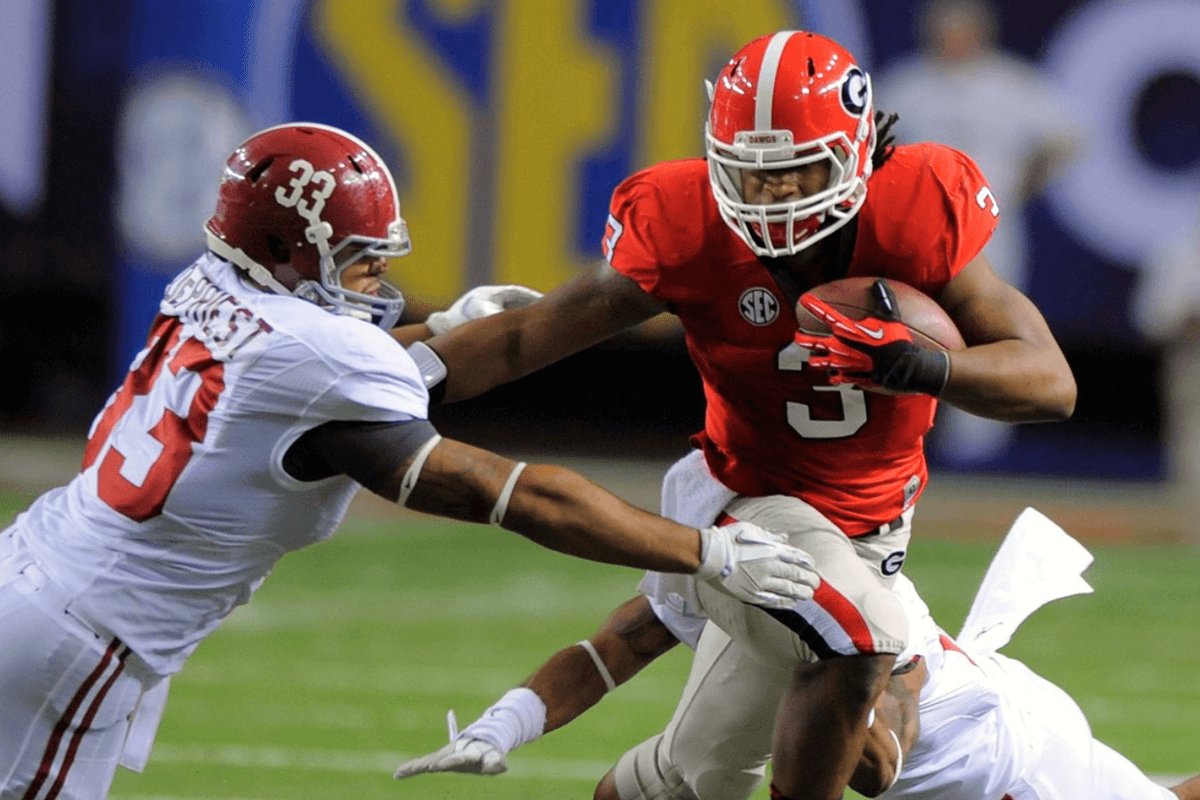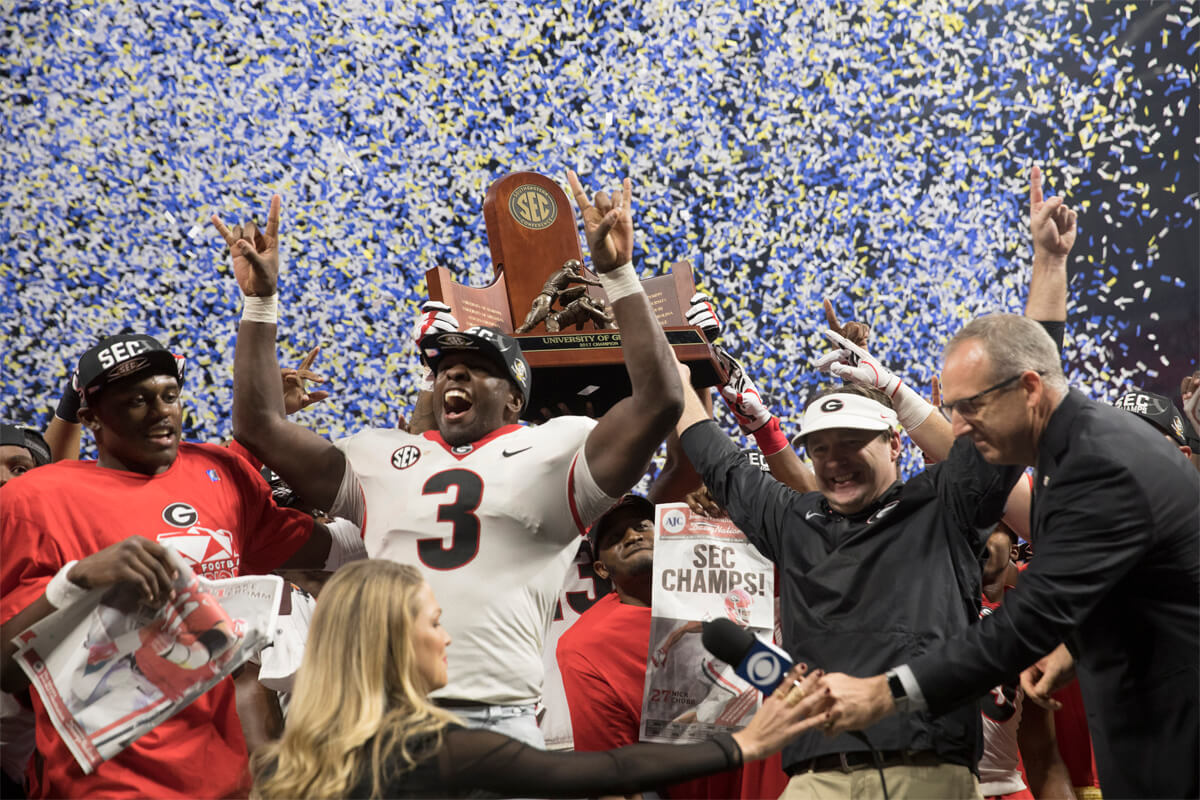Athens, Georgia. – The University of Georgia Alumni Association has unveiled the 2022 Bulldog 100, a list of the 100 fastest-growing businesses owned or operated by UGA alumni. UGA received 367 nominations for the 2022 list.
The 2022 Bulldog 100 celebrates organizations from over two dozen industries, including agriculture, real estate, health care, nonprofits and software. Of the 100 businesses, 88 are located within the state of Georgia. In total, three countries and nine U.S. states are represented in this year’s Bulldog 100.
This year’s list of fastest-growing businesses, in alphabetical order, is as follows:
5Market Realty, Athens, Georgia
Abernathy Ditzel Hendrick Bryce LLC, Marietta, Georgia
Abound Wealth Management, Franklin, Tennessee
Abundance LLC, Monroe, Georgia
Ad Victoriam Solutions, Alpharetta, Georgia
Agora Vintage, Athens, Georgia
Akerna, Denver, Colorado
American Tank Maintenance LLC, Warthen, Georgia
Ansley Real Estate, Atlanta, Georgia
Architectural Fountains & Pools Inc., Atlanta, Georgia
Athens Real Estate Group, Athens, Georgia
Athens Talley Real Estate, Athens, Georgia
Backyard Escape Inc., Atlanta, Georgia
The Barnes Law Office LLC, Atlanta, Georgia
Baseline Surveying and Engineering Inc., Watkinsville, Georgia
Bates Animal Hospital, Watkinsville, Georgia
BIOLYTE, Canton, Georgia
Biren Patel Engineering, Macon, Georgia
Bitcoin Depot, Atlanta, Georgia
BOS Medical Staffing, Athens, Georgia
BOS Security Inc., Athens, Georgia
Breda Pest Management, Loganville, Georgia
BrightStar Care Cumming-Gainesville, Cumming, Georgia
The Brogdon Firm LLC, Atlanta, Georgia
BrokerHunter, Alpharetta, Georgia
Buckhead Preparatory School, Atlanta, Georgia
Cabo Luxury LLC, Cabo San Lucas, Baja California Sur, Mexico
Caplan Cobb LLP, Atlanta, Georgia
Catapult Creative Media Inc., Baton Rouge, Louisiana
Chicken Salad Chick, Atlanta, Georgia
Cindy Lynn Dunaway Interiors, Atlanta, Georgia
Consume Media, Norcross, Georgia
Cozart Realty, Athens, Georgia
Creditors Bureau Associates, Macon, Georgia
DearthGalat LLC, Atlanta, Georgia
Dental ClaimSupport, Savannah, Georgia
Double Fun Watersports, Destin, Florida
Edwards & Hawkins LLC, Atlanta, Georgia
Elaine Burge, Sandersville, Georgia
Extra Special People Inc., Watkinsville, Georgia
Fairway Insurance Group Inc., Acworth, Georgia
Fiddleheads Garden Center, Dalton, Georgia
Globe Trotter Properties, Arlington, Virginia
Golden Isles Pharmacy, Brunswick, Georgia
Greater Athens Properties, Athens, Georgia
Grist Pallets LLC, Tifton, Georgia
Hager Design International Inc., Vancouver, BC, Canada
Hardy’s Peanuts Inc., Hawkinsville, Georgia
HatchWorks Technologies, Atlanta, Georgia
Highgate Partners LLC, Atlanta, Georgia
Impact Public Affairs, Atlanta, Georgia
inBrain, Atlanta, Georgia
Innovative Tax and Accounting Solutions LLC, Savannah, Georgia
J&M Pool Company, Senoia, Georgia
Langford Allergy LLC, Macon, Georgia
LeaseQuery, Atlanta, Georgia
Light from Light, Atlanta, Georgia
Lightnin RV Rentals, Lawrenceville, Georgia
Litner + Deganian, Atlanta, Georgia
Jeffrey Martin, CPA LLC, St. Simons Island, Georgia
Maggie Griffin Design, Gainesville, Georgia
Mark Spain Real Estate, Alpharetta, Georgia
Marketwake, Atlanta, Georgia
Martin Brothers LLC – Certified Public Accountants, Santa Rosa Beach, Florida
McMichael & Gray, PC, Peachtree Corners, Georgia
McNeal, Sports & Wilson Risk Advisers, Waycross, Georgia
Milestone Construction LLC, Athens, Georgia
Miller Veterinary Services, Conyers, Georgia
Murray Osorio PLLC, Fairfax, Virginia
Nuçi’s Space, Athens, Georgia
Offbeat Media Group, Atlanta, Georgia
ORS Companies, Athens, Georgia
OSC Edge, Atlanta, Georgia
Park Place Outreach Youth Emergency Services, Savannah, Georgia
PDI Software, Alpharetta, Georgia
PeopleSuite Talent Solutions, Mooresville, North Carolina
PharmD on Demand, Watkinsville, Georgia
Piedmont Equine Associates Inc., Madison, Georgia
Poole’s Pharmacy Inc., Marietta, Georgia
Precise Systems, Lexington Park, Maryland
Primrose School of Athens, Athens, Georgia
Rasmussen Wealth Management, Athens, Georgia
Rheos Nautical Eyewear, Charleston, South Carolina
Roadie, Atlanta, Georgia
Roberts Civil Engineering LLC, St. Simons Island, Georgia
Root Design Studio, Tucker, Georgia
SculptHouse, Atlanta, Georgia
Showpony, Augusta, Georgia
Smith Planning Group, Watkinsville, Georgia
Southern Belle Farm, McDonough, Georgia
Southern Straws Cheese Straws, Columbus, Georgia
The Spotted Trotter, Atlanta, Georgia
Stonehill, Atlanta, Georgia
TRUE Automotive, Lawrenceville, Georgia
Turknett Leadership Group, Atlanta, Georgia
TurnKey Compliance, Marietta, Georgia
Upgrade, San Francisco, California
W&A Engineering, Athens, Georgia
XY Planning Network, Bozeman, Montana
YouthServ360 Inc. dba 7 Pillars Career Academy, Forest Park, Georgia
Each year, Bulldog 100 applicants are measured by their business’ compounded annual growth rate during a three-year period. The 2022 Bulldog 100 list is based on submitted financial information for 2018-20. The Atlanta office of Warren Averett CPAs and Advisors, a Bulldog 100 partner since the program began in 2009, verified the information submitted by each company.
The UGA Alumni Association will host the annual Bulldog 100 Celebration Feb. 5, 2022, to celebrate these alumni business leaders and count down the ranked list to ultimately reveal the No. 1 fastest-growing business.
“These alumni demonstrate the value of a degree from UGA, and we are proud to recognize them for all they have achieved as leaders and entrepreneurs,” said Meredith Gurley Johnson, executive director of the UGA Alumni Association. “These individuals serve as an example to current and future alumni of what is possible when tenacity and innovation are utilized to provide better solutions and build stronger communities. We are excited to engage these alumni with the university to continue to inspire leadership among our community.”
To view the alphabetical list of businesses and to learn more about the Bulldog 100, see alumni.uga.edu/b100.








